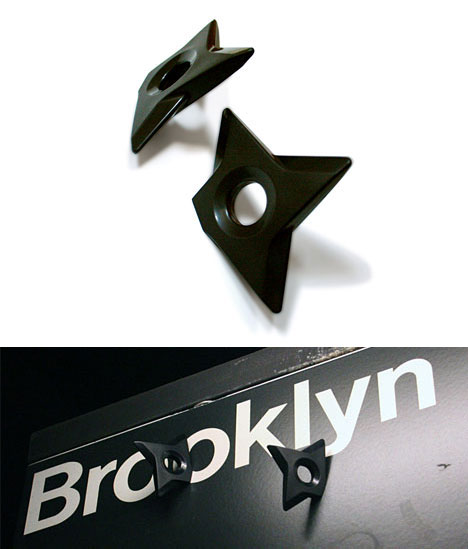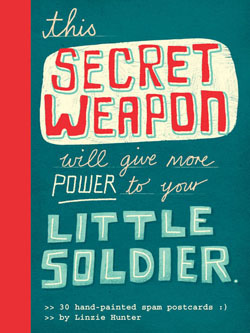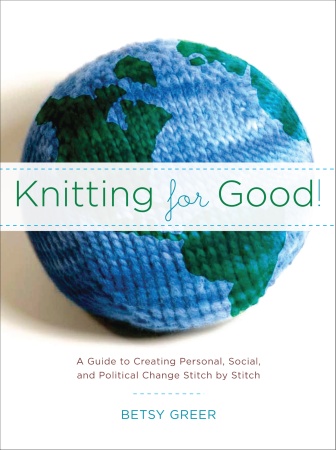 Earlier I mentioned an offer to college classes — basically to do classroom “visits” via video Skype — and I’m pleased to say that four such visits are on the schedule for this semester, at fine schools from coast to coast. I could still do one more in either March* or May, if anyone is interested. Details and contact here.
Earlier I mentioned an offer to college classes — basically to do classroom “visits” via video Skype — and I’m pleased to say that four such visits are on the schedule for this semester, at fine schools from coast to coast. I could still do one more in either March* or May, if anyone is interested. Details and contact here.
On the other hand, a sort of similar offer to book clubs has had fewer takers. A couple of inquiries, but nothing that ever got nailed down. That’s too bad, I think Buying In is a great book to talk about right now if you happen to be interested in changing the way you shop. (I may be biased in my opinion on that.) But I reiterate the offer, and again could do something in either March or May. Details and contact here.
That is all.
[1/20: March now booked.]
The Economist’s recent(ish) World in 2009 issue included a story about “no-nonsense brands” doing well in 2009, while those “priced for status are likely to suffer.”
This sounds in-line with much of the trend-pontification about the new-and-improved “values” of the 2009 consumer.
But the piece also said this:
Any brand built around do-gooding notions of organic, social responsibility or caring for the environment may need to rethinking, according to Interbrand, a marketing consultancy, as value for money rises up the consumers’ agenda.
Now, I don’t know what exactly Interbrand said. (Couldn’t find anything on their site about it.)
But if this assertion turns out to be correct, I wonder how it squares with the idea of “values.”
My thoughts on the “new thrift” are in this earlier Consumed. My thoughts on the limits of do-gooding sales pitches can be found in the final section of Buying In.

Chapters, Waterloo, ON December 2008
So in the course of putting together that earlier post about crafty stuff, I was trying to remember if Ad Age‘s uniquely dismissive assessment of Buying In (“not worth the time”) had made any mention of the book’s chapter on Etsy and the Austin Craft Mafia and the handmade phenomenon. I’d correctly remembered that it did not.
But here’s something far more interesting: I was surprised to discover that at some point in the past six months Ad Age has added a “A Second Opinion” about the book, written by a different reviewer.
Mya Frazier (I know the byline, but not the person) has a different view — “a worthwhile read,” “a valuable whirlwind tour of how consumers’ hunger for inclusion plays out in some of today’s most penetrative brands,” etc. — and I’m pleased to say picks up in particular on the chapter that was in fact most specifically written with marketing pros in mind. (Chapter 12, on consumer and murketing ethics in the marketplace; many marketers will still not care for it — not enough “takeaways” — but that’s life.)
I can’t recall ever seeing a publication offer “A Second Opinion” about a book it trashed. I looked at a few other entries on Ad Age‘s book page and didn’t see any other instances. A very unusual thing, seems to me. I wonder how it came about.
Anyway, on that note of curiosity, it’s just about time for the Murketing Organization to shut down. Enjoy your holidays.
[Re that pic: Thanks Mr. Harwood!]
Surely if you have the slightest interest in handmade/DIY/craft culture, you saw the NYT’s big story about how the category is faring in the downturn:
Craft stores, from giant chains like Michaels Stores to small scrapbook supply shops, are reporting that sales are higher compared with the last holiday season, and online marketplaces for handmade goods, like Etsy, are seeing a boom in listings and transactions.
Handmade/craft was also the theme on KCRW’s Design And Architecture this past weekend. (In an amusing moment, host Frances Anderton alluded to the same theme as that Times article while interviewing the creative director of Heath Ceramics: There’s all this unemployment and other bad economic news, Anderton obesrved, “And yet this store is a massive vote of confidence, it seems, in people’s ability to keep on buying nice ceramics.”)
Earlier Murketing noted that Etsy’s sales have been resilient. And I don’t think this broad story is going to go away anytime soon. I of course have a chapter on the crafty scene in Buying In, covering Etsy to some extent as well the Austin Craft Mafia and others.
Although I just poked fun at Anderton’s bit about “the ability to keep on buying nice ceramics,” the person from Heath actually had a response that is pretty much on point regarding the bigger question of why this segment may be holding up better than others: Some consumers still want special things, things with a narrative to them; and the handmade world feels distinct from the big-corporate world that some consumers have lost trust in.
There are different ways to assess the alternative vision of material culture that the handmade scene may or may not be offering us — but I don’t want to rehash the book here. Suffice it to say the questions are compelling enough, I believe, that they’ll stick with us in the year ahead, and more and more people are going to be interested in those questions, and their potential answers. I noticed recently that even Advertising Age is paying attention, having rounded up Etsy founder Robert Kalin as a speaker at its Idea Conference. In all, the subject seems to have made its way onto the mainstream radar in a new way in 2008. And next year the Handmade Nation documentary will come out and will likely bring even more attention to the scene.
It should be interesting to watch.
[If you simply refuse to read Buying In, here’s the Handmade 2.0 article I wrote for the Times Magazine; here’s a series of Q&As I did with three of the Austin Craft Mafia’s founders when the book came out; here’s a link to explore all the DIYism posts on this site; and here’s a link to all my DIYism-related Delicious links.]

The UK version of Buying In was published a few months ago. There will also be translated editions (so far) in Italy, China, South Korea, Turkey, and, I think, maybe Croatia. But the UK version has a different title: It’s called I’m With The Brand there.
The publisher is Constable, and right around the time the book came out over there, they sent me ten copies. I put these in a back room and basically forgot about them. But one of the 48-Hour T-shirt designers mentioned getting an order from England, which reminded me that I guess some people who read this site are, in fact, in the UK.
So I’ve dusted off those books and I’m going to give them away.
I probably don’t have 10 UK readers, and even if I did, I’m not sure I’d want to deal with that many individual mailings. So I’m keeping two copies for my future Presidential Library, and giving away the others, in two batches of four.
So: Are you in the UK? Would you like four copies of I’m With The Brand? One to keep and three to share (or if you’ve already bought it, four to share?)
Here’s all you have to do: Write to me with your mailing address, and promise me that:
a) you won’t sell off the extra copies on Amazon or whatever but will instead give them to your friends (all of whom, I’m assuming, are influential and attractive); and
b) that you’ll eventually send me an email telling me what you’ve done with the books. It doesn’t have to be super-specific, I don’t need names and addresses, I just want to the warm feeling of assurance that you’ve done something productive with them and they’re not collecting dust.
You’re also of course invited to send photographic evidence of your appealing pals reading the book in prominent public places, or even on television. But that’s not strictly required.
So if you’re in the UK, and you’re interested, write me [redacted]. I’ll mail them some time after Xmas.
[ OFFER EXPIRED! COPIES SPOKEN FOR! SORRY!]
Core77’s list of 77 Design Gifts Under $77 is noteworthy for a few reasons. First, a couple of the gifts are “Core77 Exclusives,” including this, which I think is my favorite item in the entire roundup:

“These throwing star magnets are perfect for any metallic surface. Post notes on your fridge door, or make your mark wherever you feel outnumbered.” $19, for two magnets in a “ninja-styled shuriken box.”
Also noteworthy: Cyperoptix Tielab makes the list. Murketing.com is a longtime supporter of the Tielab, having interviewed creator Bethany Shorb in this site’s very first “Subculture Inc” Q&A, back in August of 2006. And I’ve bought two of her ties, even though I basically never have reason to wear a tie.
Of course I’m also pleased that Buying In is on the list. Just thought I’d mention that.
Anyway that leaves 74 more entries for you to peruse, here. Plenty of stuff worth checking out. So check it out.
 Last night I posted Murketing.com’s exclusive Reader’s Guide to Buying In, compiled and written by the author (me). I believe, as stated, that now is a really good time to take consumer behavior seriously, to talk about it, to think about it. I think the book would be good in the book-club setting.
Last night I posted Murketing.com’s exclusive Reader’s Guide to Buying In, compiled and written by the author (me). I believe, as stated, that now is a really good time to take consumer behavior seriously, to talk about it, to think about it. I think the book would be good in the book-club setting.
So to back that up even more, I have an offer. A while ago I read this USA Today article about authors doing conference calls with book clubs. I thought: “Yeah, I would do that, that sounds interesting.” Lots of publishers do this now, or so I gather.
And thus: if your group takes up Buying In, and you’re interested in arranging a conference call (all it takes is a speakerphone) write me at murketing@robwalker.net (subject heading “book club”) and we’ll work something out. (Or I’ll do the Skype videocall setup I’ve offered to college classes, if you prefer, and you have the technology.)
And obviously: I don’t really care if you have a formal book club or not. If you’ve bought the book and my “tour” didn’t come to your city, and you want to round up some friends and make sorta kinda like a book clubbish gathering, we can probably work something out. You don’t have to go through some set of corporate hoops; there’s no middleman on this; it’s just me.
So tell your friends. Share it on Facebook, post about it on your blog or in book-club forums. Etc.
I’ll get back to regular Murketing.com-type topics and posts later today. Thanks for bearing with me.
“This is a great moment of reckoning for the household economy at all levels of the income stream,” Harvard marketing professor Nancy Koehn told Marketplace recently.
It is true. This is a great time to rethink your consumer habits in a serious way. The present financial crisis is distressing on many levels — but it is also an opportunity, to change the way you shop, to shed bad habits, to forge a different relationship with material culture. I don’t mean simply cutting back for now, bargain-hunting and pinching pennies for a while, and hoping things get “back to normal” next year. I mean it’s an opportunity to make permanent changes. To change the way you consume, forever.
 One of the primary aims of Buying In is to pull back a curtain for consumers on the way the commercial-persuasion industry has really changed in recent years, and on the way that the consumer mind (the human mind) really works, and isn’t going to change. The point of this exercise is to help consumers to make better decisions. The book does not argue against or complain about materialism or branding, per se — rather, it aims to explain the reality of these elements of contemporary life, and thus leave the reader better positioned to make consumer decisions that are productive, and that satisfy.
One of the primary aims of Buying In is to pull back a curtain for consumers on the way the commercial-persuasion industry has really changed in recent years, and on the way that the consumer mind (the human mind) really works, and isn’t going to change. The point of this exercise is to help consumers to make better decisions. The book does not argue against or complain about materialism or branding, per se — rather, it aims to explain the reality of these elements of contemporary life, and thus leave the reader better positioned to make consumer decisions that are productive, and that satisfy.
I am aware, of course, that the book also has an audience in the world of marketing professionals, or at least a certain segment of that world. However, it is with the consumer audience in mind that I have created the Reader’s Guide to Buying In: The Secret Dialogue Between What We Buy and Who We Are. you will find it after the jump.
If you are a participant in a book club, you may know that publishers often create such guides for books that they see as likely candidates for book clubs. This one is partly based on having read other guides (like the one my publisher, Random House, created for Po Bronson’s book Why Do I Love These People?) In addition, it was influenced by the experience of promoting the book — the questions and reactions that came up on call-in radio shows and appearances before audiences, as well as interviews, reviews, and online reactions to the book. It was also shaped by suggestions from Alex J. Mann, a student at Penn State. (Thanks again, Alex!)
Unlike a traditional, publisher-created Reader’s Guide, this one is dynamic: It includes multiple links to additional reading that either amplifies the book’s themes, critiques them, or questions them. From time to time this guide will be changed or updated, as new critiques emerge.
Like a traditional Reader’s Guide, it is intended to spark discussion in a book club or other group setting. As indicated, now seems like a very good time for such discussion. So if you are part of a book club, or know someone who is, consider Buying In — and the guide that follows. Read more
Posted Under:
Buying In (the book)
This post was written by Rob Walker on November 12, 2008
Comments Off on Helping You Change The Way You Shop: The exclusive Buying In book-club reader’s guide
 A few weeks ago I undertook an interesting little experiment that worked out really well: I “visited” a university class on the other side of the country, via Skype (video).
A few weeks ago I undertook an interesting little experiment that worked out really well: I “visited” a university class on the other side of the country, via Skype (video).
And if the circumstances are right, I am willing to do the same for your class, too.
The deal is as follows:
The experiment came about because of a note I got from David Horowitz, who used Buying In in a Consumer Behavior class he’s teaching this semester at Sonoma State University. We had a little exchange, and somewhere along the way he said (paraphrasing): If you’re ever in the area, come visit my class, etc.
This is something I get a lot. But of course it’s extremely rare that I happen to be in the right city at the right time to visit a college/university class — which is a shame, because I always enjoy such meetings and discussions when they do come about.
Anyway, so I’d been thinking about this very dilemma for a while and offered to visit the class … via Skype. Dr. Horowitz was game, and his classroom had the necessary technical specs: a WiFi connection, and video projector hooked up to his laptop. Not unusual for the contemporary college or university classroom these days, I believe.
So we picked the day, and I turned set Skype’s video preference to “on,” called in, and spent about a half an hour chatting with and taking questions from his class, of about 30 or 40 students I guess.
It was pretty cool!
In fact I consider the experiment successful enough that I’m willing to do it again. Thus this announcement: If you teach a class and use Buying In as part of it — I don’t care if it’s consumer behavior, marketing, design, cultural studies, whatever — I would be happy to do the same thing for you.
Obviously there are some scheduling constraints; I can’t do it every day. But if you’re interested, now or for some future semester, please drop me a line at murketing@robwalker.net (subject heading “class visit” or somesuch) and let me know. We’ll work something out.
(Also obviously: If you’re a student who thinks this is a good idea, simply bring it to your prof’s attention.)
Finally, I’d like the offer public thanks here to David Horowitz, and his students, for playing along with this experiment. Hope you all enjoyed it, too.

Out any minute now: Linzie Hunter‘s Secret Weapon postcard book: “30 Hand-Painted Spam Postcards.” You no doubt read about Linzie Hunter in this Consumed. The book is supercool.

Also coming soon: Betsy Greer’s Knitting For Good. I just got this in the mail and it looks cool, too, though I have not yet read it. Possibly you read a bit about Betsy Greer in Buying In.

And now in its third (!) printing, according to an email blast I received yestersday, there’s the book version of Handmade Nation. I haven’t yet gotten hold of this, but I hear nothing but good about it. And Faythe Levine is, of course, also in Buying In.

One of the new embroidery patterns from Sublime Stitching is a tie-in to the forthcoming documentary Handmade Nation. Sublime Stitching is of course the company of Jenny Hart, of the Austin Craft Mafia; Handmade Nation is the film coming out next year, made by Fayth Levine.
Hart is also going to be at Maker Faire in Austin this weekend, along with fellow ACM founder Jennifer Perkins. Details here. Hart, Perkins, and Levine are all in the chapter of Buying In that looks at DIYism etc. Follow-up interviews with Hart and Perkins on this site are here and here. (And one with Tina Sparkles, also an ACM founder who’s in the book, is here.)
I think a promotional tie-in embroidery pattern is a really great idea. Read more
Well, after last week’s posts here on optimism, and pessimism, and optimism vs. pessimism — it’s looking pretty grim out there! As I type, the Dow has fallen 600 points below the 10,000 mark. Other lousy economic news abounds, and the presidential race is disintegrating into bitterness and tomfoolery.
The NYT’s story on how consumers are faring is not exactly shocking: “Full of Doubts, U.S. Shoppers Cut Spending.” Looks like consumer spending for the third quarter will be down 3 percent, per projections, “the first quarterly decline in nearly two decades.”
“The last few days have devastated the American consumer,” said Walter Loeb, president of Loeb Associates, a consultancy, who said he worried that the constant drumbeat of negative news about the economy was becoming a self-fulfilling prophecy. “They all feel poor.”
No surprise, then, that the post here last week that got the most response was the pessimism one, which also happened to ask: “Is Main Street a bunch of spoiled overspending babies?” More specifically, I brought up some comments from a Sunday chat show in which some observers contended that one of the issues America is going to have to work through is that many Americans have been living well beyond their means for years, and in denial about it.
The comments were mixed, to say the least. However, I wanted to follow up in a general way to make a broad point that’s not aimed at any of those comments specifically. Read more
AdFreak, citing BoingBoing, muses briefly on false memories and branding. One of the cited studies came up briefly in this article (of mine) about brand revival and memory, and in somewhat more detail in the third chapter — if I’m remembering right — of Buying In.
Here, then, the third Q&A connected to artists I commissioned to create posters related to Buying In. This time it’s The Little Friends of Printmaking, who I believe I first heard of from Faythe Levine; then I checked out their site, and saw their work in person when I happened to be at Renegade Chicago a year or so ago. I was thrilled when they zithromax were willing to make a poster in connection with the Washington D.C. Buying In event (see below; there’s also a version of this poster that’s sort of like a “tour blank,” but more on that some other time).
As with F2 Design and Amy Jo, the other esteemed creators I was fortunate to enlist in my largely ego-driven cause, I asked The Little Friends of Printmaking if they’d be willing to do a Q&A here, and they said yes. Read on for their thoughts on working as a team; on getting applications from hopeful Brand Managers; on the inspiring effects of crippling student debt and no particular professional prospects; on the effect of so many poster-makers; on how their life is actually not that much like a sitcom; and on which of their cats is less helpful, among other topics.
Very briefly: The Little Friends of Printmaking are Melissa and JW Buchanan; they are based in Milwaukee; they make posters and art prints and illustration work and apparently even at least one toy. (Blog; Flickr stream.) And as you’ll see, they’re very funny.

Q: So you are a married couple who work together as Little Friends of Printmaking. At what point did you decide to take a team approach? And do you think it made it harder or easier to establish yourselves as Little Friends of Printmaking than as two separate artists? Do people ever think that you’re more of a company than two collaborating artists?
Melissa: We started working together when we were in school. We were both studying art at the University of Wisconsin in Madison, and we had met early on. I don’t know when exactly we started to work as a team, or if there was a specific project that made us want to pool our resources; I think it was a gradual extension of us working side by side. When you’re a printmaker the work goes much faster if you’re working with a buddy. That kind of relationship, where you help someone else print their work, that wasn’t unusual. What we did, collaborating from beginning to end, was unusual. Our professors didn’t really encourage us or even approve of our partnership, probably because it was harder to grade us as individuals. We made their lives 0.15% more complicated, which of course was unacceptable.
JW: It’s a big step to throw everything together into a partnership the way we did. Maybe we didn’t have the sense of propriety that other people had for their own work, or maybe we just liked each other’s work a whole lot. Who knows. As a team, we have had an easier time establishing ourselves in some respects. When you work under a name that isn’t your given name, or from under the umbrella of a collective, you kind of get to invent and define who you are as an artist without sounding too much like an idiot or an asshole.
It’s been much easier for us to promote our Little Friends projects because our names aren’t front and center. I don’t think we would have made it very far if we had to rely on reserves of self-confidence that we don’t have. We can hide behind the name, use it as a bully pulpit, whatever. It works for us. There’s still a lot of glamour attached to the idea of the artist as a genius with a singular vision—we don’t get any of that. We’re glamour-deficient. Read more
After the event at Politics & Prose earlier this month, I “signed stock,” meaning I signed some copies of the book for them to sell after I was gone etc. If you’re interested in a signed copy, you can buy one from them even if you don’t live in DC, online. Just specify in the comments field that you’re looking for a signed copy, and if they have any, you’ll get one. [Thanks again Becca & Mike.]
If you’ve missed the latest reviews & interviews, (USA Today, Harvard Business Review, etc.), go here.
[Image from the Murketing Flickr group]
 Earlier I mentioned an offer to college classes — basically to do classroom “visits” via video Skype — and I’m pleased to say that four such visits are on the schedule for this semester, at fine schools from coast to coast. I could still do one more in either March* or May, if anyone is interested. Details and contact here.
Earlier I mentioned an offer to college classes — basically to do classroom “visits” via video Skype — and I’m pleased to say that four such visits are on the schedule for this semester, at fine schools from coast to coast. I could still do one more in either March* or May, if anyone is interested. Details and contact here.



 "
"





















 Kim Fellner's book
Kim Fellner's book  A
A